The national symbols of Brazil represent that nation in the most varied aspects, ranging from flora, fauna, and culture.
We have a few emblems and figures representing the country, and while most of them are official, some are simply considered national symbols of Brazil by the general public.
Still, all of these symbols are very special to all of those Brazilians who share feelings of patriotic pride, including me.
Let’s get to them!
National symbols of Brazil
These are the official and non-official national symbols of Brazil in no particular order. Enjoy!
Brazil flag
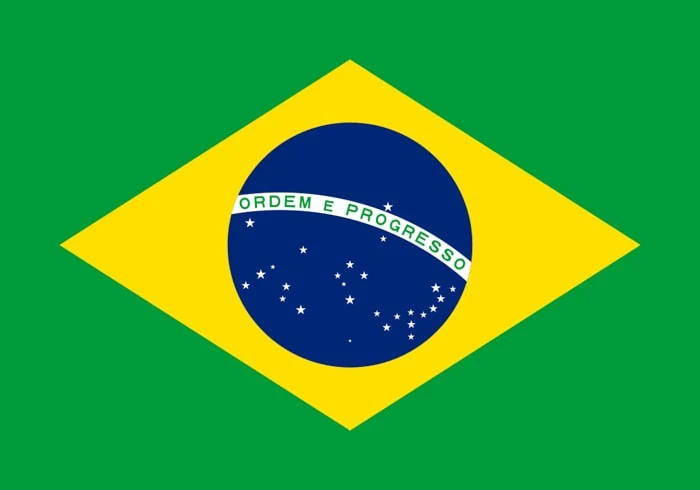
The national flag is the utmost representation of a country. It is the piece of patriotism that every proud citizen waves in the air.
In the same breath, our flag is the beloved and most representative symbol of Brazil.
Design-wise, the Brazilian flag has our characteristic colors: green, yellow, and blue. It is made up of a green rectangle-shaped base, overlaid with a yellow rhombus, and a blue circle in the middle.
The blue circle depicts the starry sky of November 1889 in Rio de Janeiro when the Republic of Brazil was proclaimed—each star represents a Brazilian state and the Federal District.
This blue circle is spanned by a curved descending white stripe with our national motto “Ordem e Progresso” in green letters.
“Ordem e Progresso” means “order and progress” in English.
It is a beautiful flag, don’t you think? Tell me in the comments about how your country’s flag looks, and I will try to guess your nationality. 😉
Brazil national motto: Ordem e progresso
National Anthem of Brazil
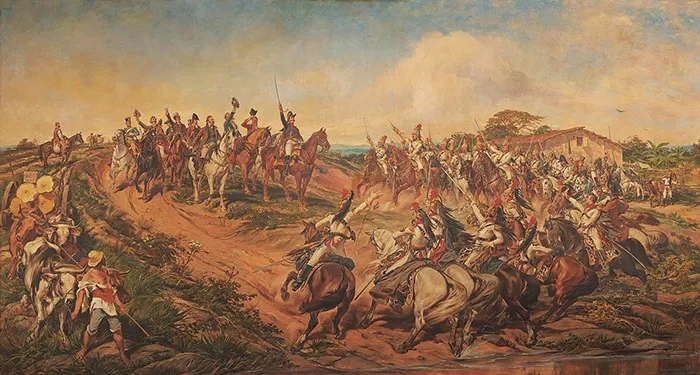
Singing our anthem evokes many emotions in my Brazilian heart, and I can imagine singing your country’s national song does the same to you.
Besides, it is undeniable that our anthem is a crucial national symbol of Brazil, after the flag.
It tells the world about our history, battles, landscapes, and ourselves as fighters.
In some schools, children sing it once a week before having classes so that they learn it from a young age.
Literature-wise, the anthem’s lyrics have been described as Parnassian in style and Romantic in content.
You can read more about the Brazilian National Anthem here—I included the English translation too.
The Coat of Arms of Brazil
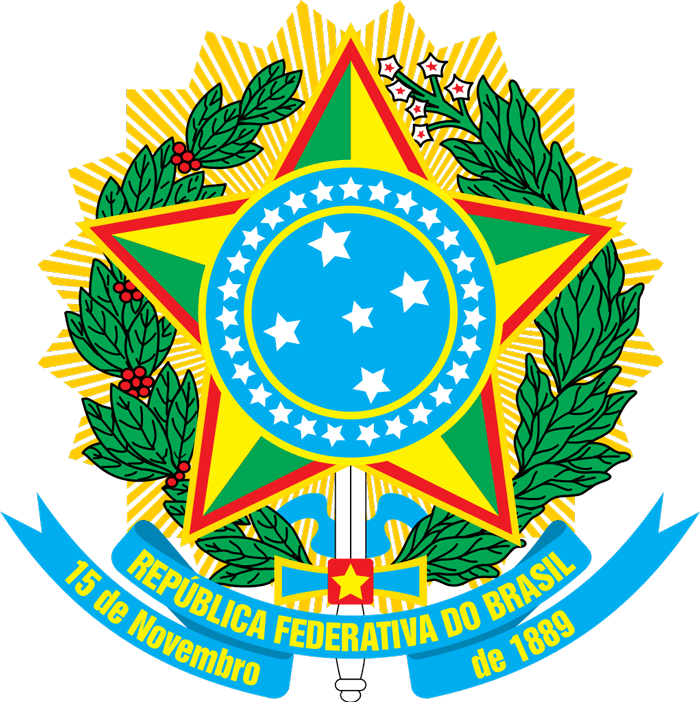
Created only four days after the country became a republic, the coat of arms of Brazil consists of the central emblem surrounded by coffee and tobacco branches, respectively.
Both coffee and tobacco were crucial crops in Brazil at that time.
Design-wise, the coats of arms of Brazil has a blue circle in the center where the Southern Cross constellation can be seen. The ring of 27 stars around it represents Brazil’s 26 states and the Federal District.
At the bottom, a blue ribbon holds Brazil’s official name (Portuguese: República Federativa do Brasil — English: Federative Republic of Brazil) in its first line.
The second line holds the date of the proclamation of the republic.
National flower of Brazil
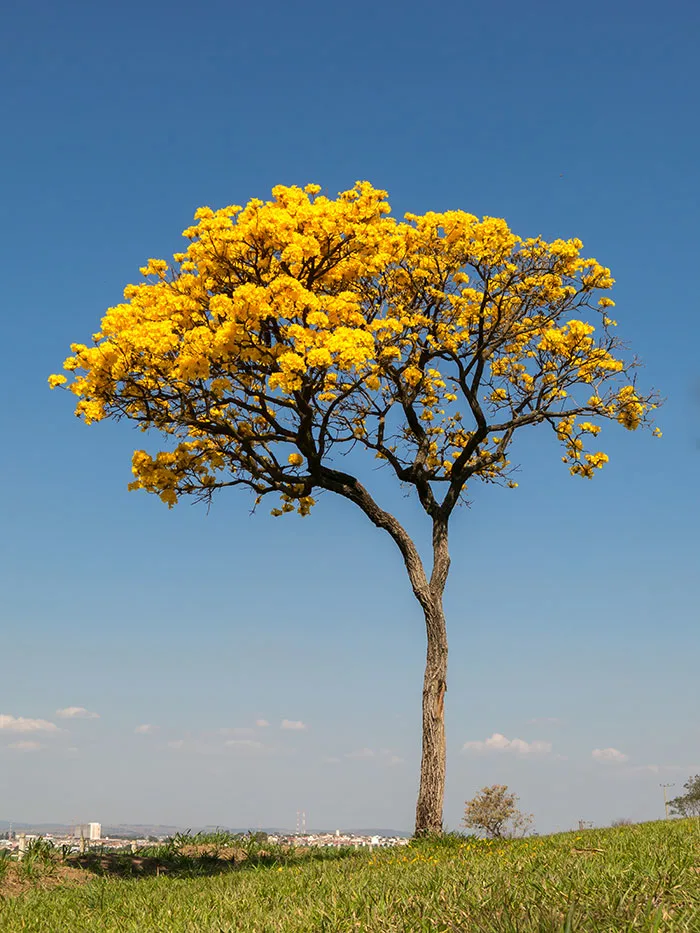
The national symbols of Brazil aren’t limited to official representations. In a country with such extraordinary flora, nature had to be one of this nation’s symbols, right?
And among all our beautiful flowers, the Yellow Ipe flower (Handroanthus Albus formerly Tecoma chrysostricha) is the chosen one.
Ipê-amarelo is the common name given to the many Brazilian plants and trees belonging to the mimosa, bignonia, and borage families; there is no English equivalent.
Still, it is a beautiful urban tree with gorgeous flowers that we have in many streets throughout the country.
National tree of Brazil
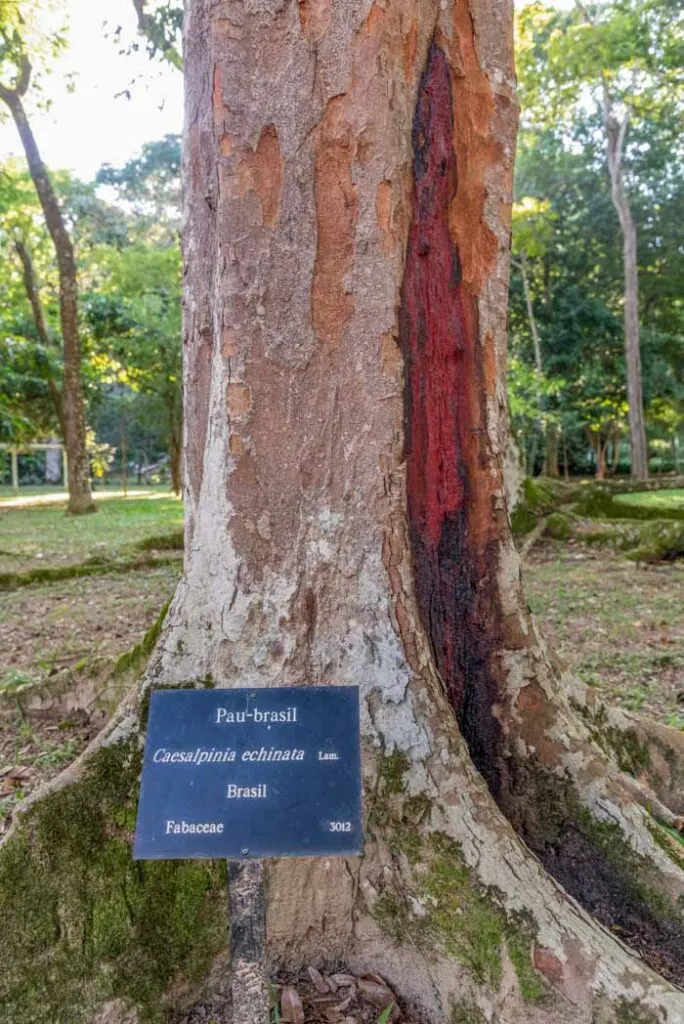
If Brazil has a national tree, it has to be the pau-brasil (caesalpinia echinata). The tree that gave name to our country is a Brazilian timber tree commonly known as Pernambuco wood or brazilwood.
This plant has a dense, orange-red heartwood and is the premier wood used for making bows for stringed instruments.
The wood also yields a red dye called brazilin, which oxidizes to brazilein.
Brazilin dye
Brazil fact: The country’s name is a shortened form of Terra do Brasil, “land of brazilwood.”
National animal of Brazil
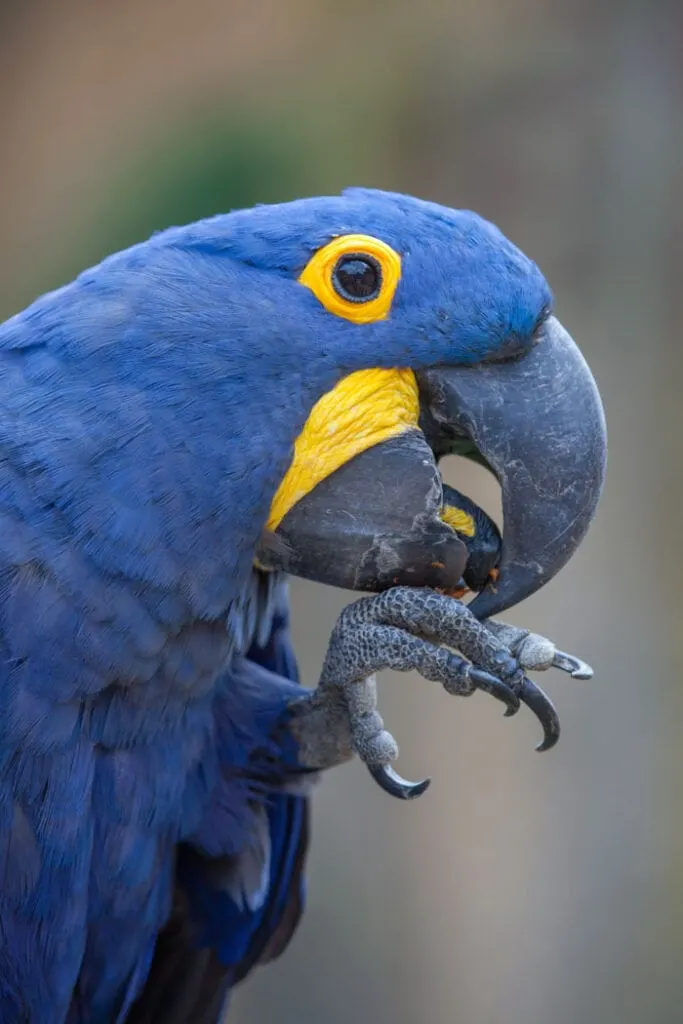
While Brazil has no official national animal, at least none official, a few animals are often used to represent the country.
Here are some emblematic Brazilian animals that people use as a symbol of Brazil:
- Jaguar – Powerful and fierce, the jaguar is one of the big cats in the world.
- Hyacinth macaw – The world’s largest parrot species is blue and yellow, which is why many people use it as a symbol of Brazil.
- Yellow armadillo – This lovely Brazilian animal is the third-largest armadillo species.
- Golden lion tamarin – The Golden lion tamarin is a small, endangered primate endemic to Brazil’s Atlantic coast. Despite its name, this monkey isn’t related to lions.
National bird of Brazil
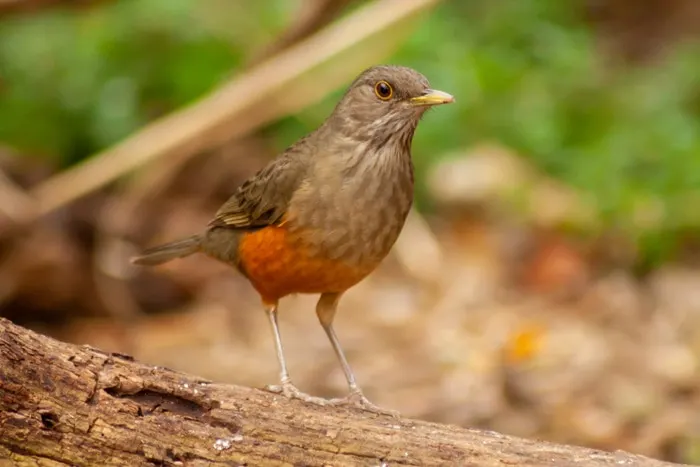
Unlike the jaguar, macaw, armadillo, and monkey, the Rufous-bellied thrush, or Sabiá in Portuguese, is an official national symbol of Brazil, officially determined by a presidential decree.
Mind you, the Rufous-bellied thrush is the national bird, but we don’t have a national animal. It’s just a matter of terminology, but still.
As the country’s national bird, the Rufous-bellied thrush (Turdus rufiventris) is found all over Brazil.
Beyond that, this little bird is seen as the spirit of the commoner Brazilian because between August and November, thousands of birds sing during the night until sunrise. It’s a symbol of hope.
Did you like this article about the national symbols of Brazil? Then share it with a friend who might like it too!
